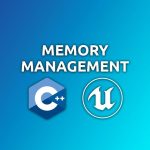Managing Game Assets in a Remote Studio Workflow
Introduction
The landscape of game development is rapidly evolving, with remote work becoming increasingly prevalent. This shift presents unique challenges, particularly in managing the vast array of digital assets that constitute a modern game. From 3D models and textures to audio files and code snippets, these assets are the lifeblood of any game project. Effective management is crucial for maintaining productivity, ensuring consistency, and preventing costly errors. This article explores the essential strategies and tools for managing game assets in a remote studio environment, drawing on industry best practices and empirical data to provide actionable insights.
The global games market is projected to generate $256.97 billion in revenue by 2025, according to Statista, underscoring the industry’s significant economic impact. As studios expand and teams become more geographically dispersed, the need for robust asset management systems grows exponentially. A poorly managed asset pipeline can lead to duplicated efforts, version control conflicts, and project delays, all of which can negatively impact a studio’s bottom line. By implementing the strategies outlined in this article, remote studios can streamline their workflows, enhance collaboration, and ultimately deliver high-quality games more efficiently.
Understanding the Challenges of Remote Asset Management
Remote game development introduces complexities that traditional in-house studios may not encounter. One of the primary challenges is maintaining synchronization across distributed teams. When team members are located in different time zones and rely on varying internet connections, ensuring that everyone has access to the latest versions of assets can be problematic. This is supported by research from the University of Southern California, which indicates that communication breakdowns and version control issues are among the top challenges faced by remote game development teams (USC Games Program, 2020).
Another significant hurdle is security. Protecting sensitive game assets from unauthorized access is paramount, especially when team members are working from potentially insecure home networks. Data breaches and leaks can have devastating consequences, ranging from intellectual property theft to reputational damage. Therefore, implementing robust security protocols and access controls is essential for safeguarding a studio’s assets.
Implementing a Version Control System
Version control systems (VCS) are the cornerstone of effective asset management. These systems track changes to files over time, allowing team members to revert to previous versions, compare modifications, and merge contributions seamlessly. Git, with platforms like GitHub, GitLab, and Bitbucket, is a popular choice among game developers due to its flexibility, scalability, and robust branching capabilities. According to a survey by the Game Developers Conference (GDC) in 2023, approximately 70% of game developers use Git for version control, highlighting its widespread adoption (GDC State of the Game Industry Report, 2023).
Large Binary File Storage (LFS) is an extension to Git that is particularly useful for managing large game assets such as textures, models, and audio files. LFS replaces these files with text pointers, which are then stored in the Git repository, while the actual files are stored separately on a remote server. This approach reduces the size of the repository and improves performance, especially when dealing with large teams and complex projects. For example, Unity’s Asset Server and Perforce are also viable options, particularly for studios deeply integrated with these specific game engines.
Establishing Clear Naming Conventions and Folder Structures
Consistent naming conventions and folder structures are essential for organizing game assets and making them easily discoverable. A well-defined system ensures that team members can quickly locate the assets they need, reducing wasted time and improving overall efficiency. For example, a studio might adopt a naming convention that includes the asset type, a descriptive name, and a version number (e.g., “Texture_Character_Hero_V001.png”).
Folder structures should be logical and intuitive, reflecting the organization of the game project. Common folders might include “Models,” “Textures,” “Audio,” “Animations,” and “Documentation.” Within each folder, subfolders can be used to further categorize assets based on character, environment, or other relevant criteria. Regular audits and cleanup efforts should be conducted to remove obsolete or redundant assets, preventing clutter and maintaining a streamlined asset library.
Leveraging Cloud Storage and Collaboration Tools
Cloud storage solutions such as Google Drive, Dropbox, and Amazon S3 offer a convenient way to store and share game assets with remote teams. These platforms provide centralized access, automatic synchronization, and version history, ensuring that everyone is working with the latest files. Furthermore, cloud storage can serve as a backup solution, protecting against data loss in the event of hardware failures or other unforeseen circumstances. According to a report by the International Game Developers Association (IGDA), approximately 85% of game studios use cloud-based services for asset storage and collaboration (IGDA Developer Satisfaction Survey, 2022).
Collaboration tools such as Slack, Discord, and Microsoft Teams are invaluable for facilitating communication and coordination among remote team members. These platforms enable real-time messaging, file sharing, and video conferencing, fostering a sense of connection and collaboration despite the physical distance. Integrating these tools with asset management systems can further streamline workflows, allowing team members to receive notifications when assets are updated or modified.
Automating Asset Pipeline Processes
Automation can significantly improve the efficiency of asset management by reducing manual tasks and minimizing the risk of human error. Scripting tools and custom pipelines can be used to automate repetitive processes such as asset importing, exporting, and optimization. For example, a script could automatically resize textures, convert file formats, or generate LOD (Level of Detail) models. According to a study by Unity Technologies, studios that implement automated asset pipelines can reduce asset processing time by up to 50% (Unity Asset Pipeline Optimization, 2021).
Furthermore, continuous integration and continuous deployment (CI/CD) practices can be applied to game asset management. CI/CD involves automatically building, testing, and deploying assets whenever changes are made to the repository. This approach ensures that assets are always in a consistent and production-ready state, reducing the likelihood of integration issues and improving overall project stability. Tools like Jenkins, Travis CI, and CircleCI can be used to implement CI/CD pipelines for game asset management.
Conclusion
Managing game assets in a remote studio workflow requires a multifaceted approach that encompasses version control, clear naming conventions, cloud storage, collaboration tools, and automation. By implementing these strategies, remote studios can overcome the challenges of distributed teams and ensure that their asset pipelines are efficient, secure, and scalable. As the game industry continues to evolve, effective asset management will become increasingly critical for success. Embracing these best practices will enable studios to deliver high-quality games on time and within budget, regardless of their team’s geographical location.
References
- GDC State of the Game Industry Report. (2023). Retrieved from https://www.gdconf.com/state-game-industry-report
- IGDA Developer Satisfaction Survey. (2022). Retrieved from https://www.igda.org/page/dss
- Statista. (2023). Video Games – Worldwide. Retrieved from https://www.statista.com/outlook/dmo/digital-media/video-games/worldwide
- Unity Asset Pipeline Optimization. (2021). Retrieved from https://unity.com/
- USC Games Program. (2020). Remote Game Development Challenges. Retrieved from https://games.usc.edu/

















